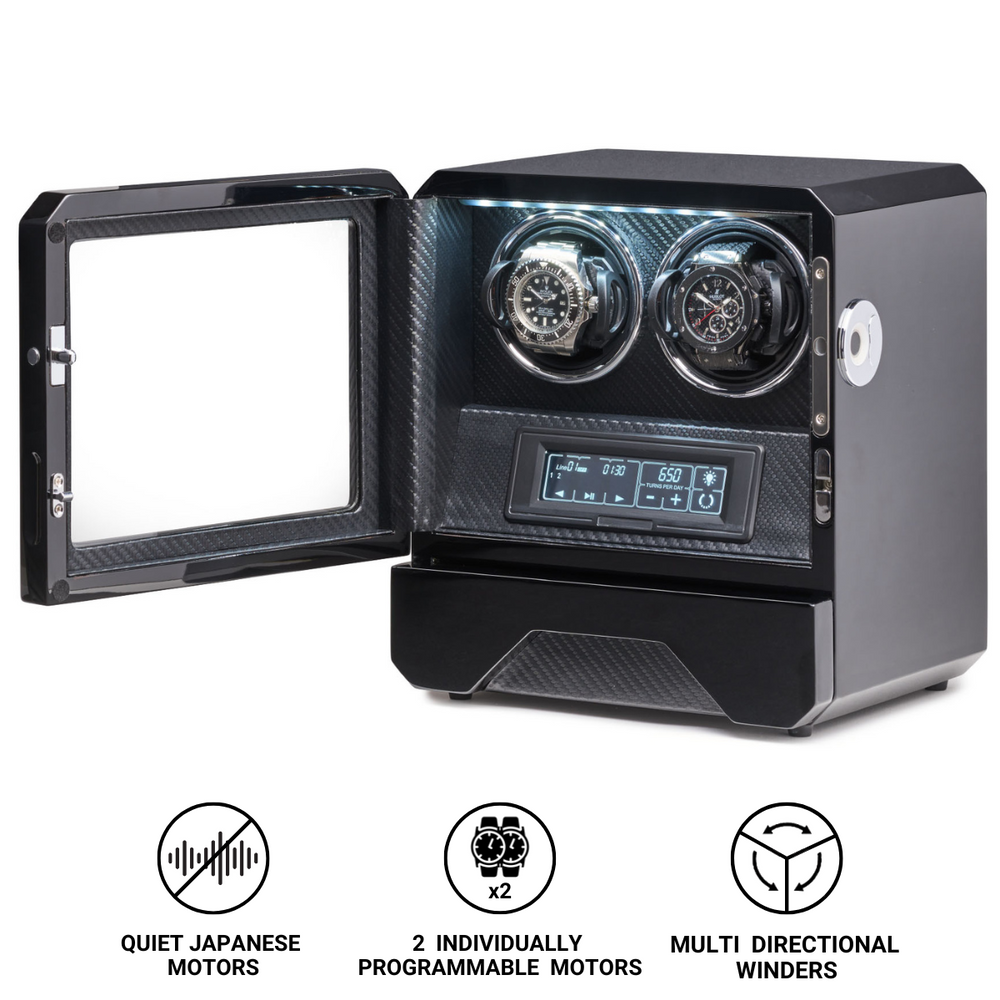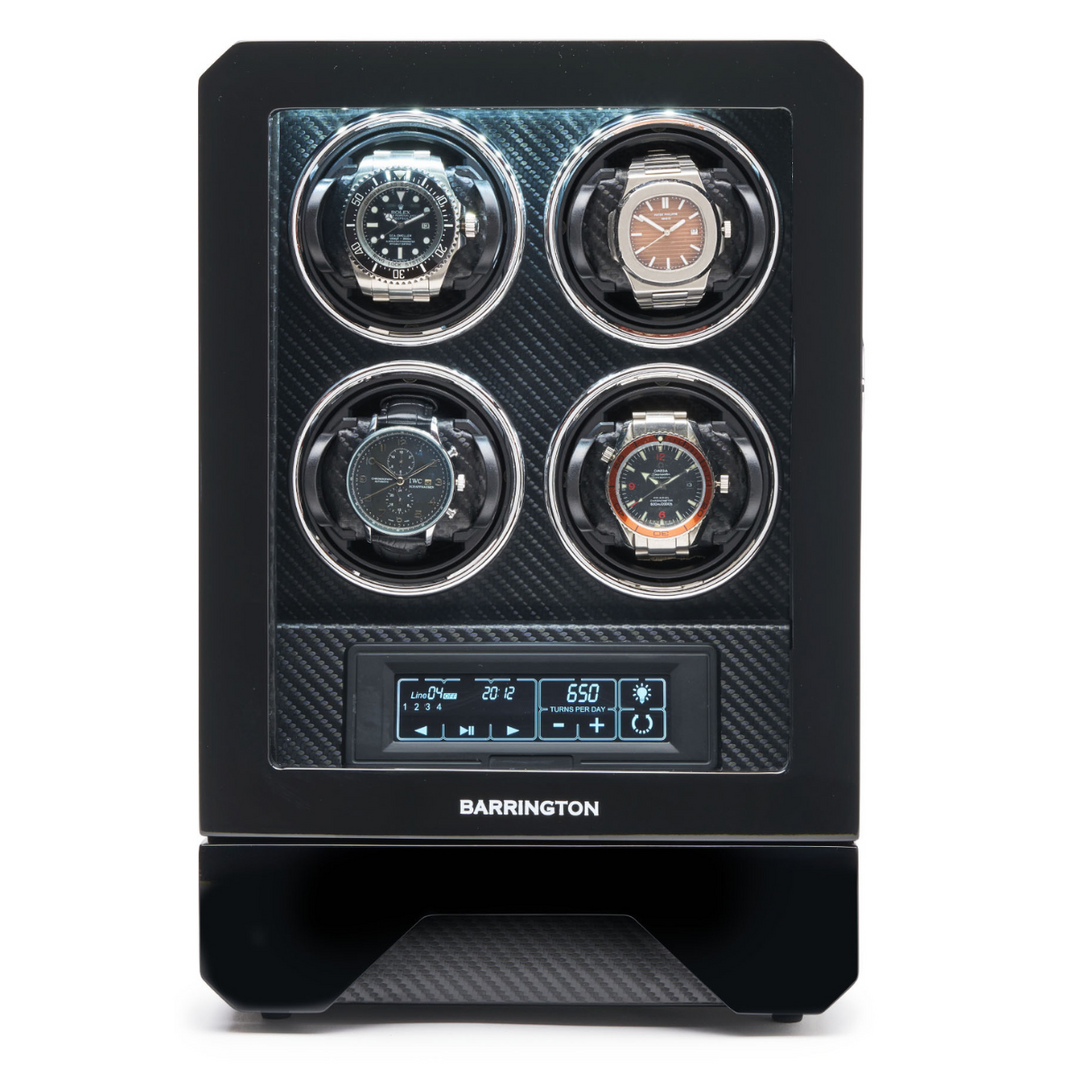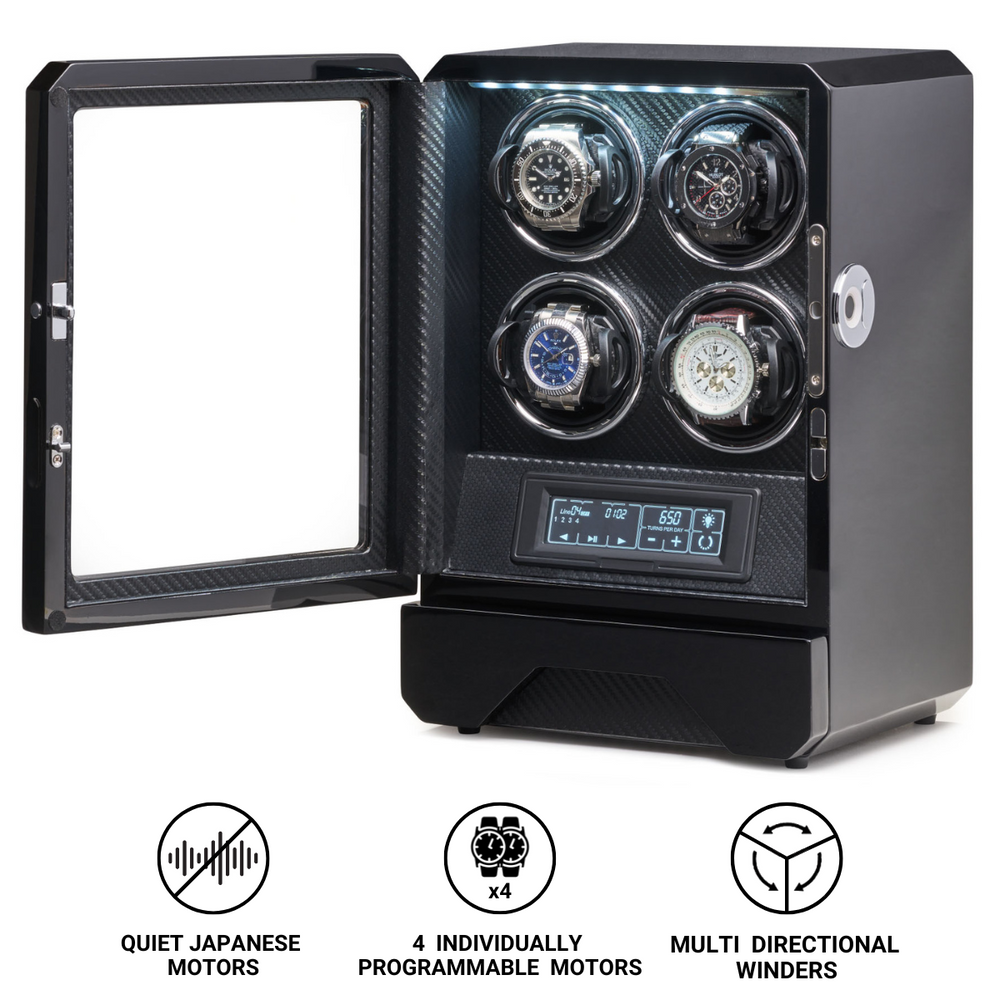What is Enamel Dial?
Among the many techniques that define the artistry of traditional watchmaking, few are as revered, intricate, and enduring as the creation of an enamel dial. Enamel dials are celebrated for their unmatched lustre, depth, and longevity, transforming the face of a watch into a miniature work of art. Their glossy, glass-like surface radiates purity and sophistication, reflecting centuries of craftsmanship that bridge the worlds of art, chemistry, and horology.
Enamel, derived from powdered glass fused at high temperatures onto a metal base, has been used in decorative arts for millennia. In watchmaking, it represents the pursuit of perfection through a process that is both technically demanding and artistically expressive. Despite the advent of modern materials and industrial production, enamel dials remain a hallmark of haute horlogerie, admired for their beauty and the painstaking labour required to create them.
The Origins of Enamel in Watchmaking
The use of enamel in watchmaking dates back to the late 16th and early 17th centuries, when artisans in Geneva and Blois began applying the technique to pocket watches. Early examples were heavily influenced by jewellery and fine art, with enamel serving as a decorative medium for miniature paintings, floral motifs, and intricate patterns.
By the 18th century, Geneva had become the epicentre of enamel artistry. Craftsmen such as Jean-Marc Vacheron, Pierre Jaquet-Droz, and Abraham-Louis Breguet employed enamelling to embellish watch cases and dials, elevating timepieces into objects of beauty and status. Enamel’s ability to retain its colour and brilliance indefinitely made it particularly prized among collectors and aristocrats.
With the rise of wristwatches in the early 20th century, enamel dials transitioned from ornamental art to functional luxury. The technique was refined to produce clean, minimalist designs ideal for legibility and elegance. The gleaming white enamel dials of early Patek Philippe, Longines, and Vacheron Constantin watches became synonymous with precision and refinement.
Today, enamel remains one of the most respected and challenging crafts in high-end watchmaking, practised by only a handful of skilled artisans worldwide.
The Enamelling Process
Creating an enamel dial is a meticulous process that demands patience, precision, and artistry. Every stage carries the risk of failure, as a single imperfection can render the piece unusable. The process combines centuries-old craftsmanship with modern technical expertise.
-
Preparation of the Base
The dial begins with a metal base, typically copper, gold, or silver. The surface must be perfectly smooth and free of impurities to ensure proper adhesion. It is cleaned, polished, and sometimes engraved or stamped depending on the desired final effect. -
Application of the Enamel Powder
Finely ground glass powder, mixed with water or oil, is carefully applied to the base using a brush, spatula, or sieve. The artisan ensures an even, thin coating, knowing that any inconsistency could cause cracks or bubbles during firing. -
Firing in the Kiln
The dial is fired in a kiln at temperatures between 750 and 900 degrees Celsius. The heat melts the glass particles, fusing them into a smooth, glossy layer. After cooling, the surface is inspected for imperfections such as air bubbles, discolouration, or warping. -
Repetition of Layers
To achieve depth and uniformity, multiple layers of enamel are applied and fired, sometimes up to a dozen times. Each firing introduces the risk of failure, as even the smallest fluctuation in temperature can cause cracking or distortion. -
Polishing and Finishing
Once the desired depth and colour are achieved, the surface is polished to a mirror-like finish. Holes are drilled for hands and indices, and the edges are carefully shaped. The result is a flawless, lustrous surface that can endure centuries without fading.
The process can take several days or even weeks to complete, with rejection rates often exceeding 50 percent. This rarity and the immense skill required contribute to the value and prestige of enamel dials.
Types of Enamel Techniques in Watchmaking
Over the centuries, several distinct enamelling techniques have evolved within the watchmaking tradition. Each has its own aesthetic character and level of complexity.
-
Grand Feu (Great Fire) Enamel
The most traditional and widely recognised technique, grand feu involves multiple firings at very high temperatures. The resulting surface is smooth, brilliant, and exceptionally durable. Many classic white or black dials in fine watchmaking are produced using this method. -
Champlevé Enamel
In this technique, the artisan engraves or etches recesses into a metal base, which are then filled with enamel powder before firing. The raised metal outlines remain visible, forming patterns or motifs that add texture and contrast. -
Cloisonné Enamel
Here, fine gold wires are shaped into outlines (cloisons) on the dial to form compartments, which are then filled with different enamel colours. This method allows for detailed designs, often depicting landscapes, animals, or celestial scenes. -
Flinqué Enamel
This style combines guilloché engraving with translucent enamel coating. The engraved metal pattern shows through the enamel, creating shimmering depth and intricate visual effects. -
Painted or Miniature Enamel
Artists use fine brushes to hand-paint detailed scenes on the enamel surface, often under a microscope. Multiple firings are required to set the colours. This technique, mastered by artisans in Geneva, represents the pinnacle of decorative enamel artistry.
Each technique requires different tools, materials, and levels of expertise, but all share the same dependence on precision and control of temperature. The results are unique: no two enamel dials are ever exactly alike.
The Aesthetic and Technical Qualities of Enamel Dials
Enamel dials possess a beauty that transcends time and fashion. Their distinctive qualities stem from both the material and the method of creation.
-
Unparalleled Depth and Lustre
The surface of an enamel dial reflects light in a unique way, producing a luminous depth that printed or lacquered dials cannot replicate. The smooth, glass-like texture conveys purity and elegance. -
Permanence and Durability
Enamel is highly resistant to ageing, corrosion, and ultraviolet light. Unlike painted or printed dials, it will not fade, discolour, or peel over time. Many antique enamel watches from the 18th and 19th centuries remain as vibrant today as when they were made. -
Colour Vibrancy
Enamel allows for exceptionally rich colours due to its glass composition. Pigments are embedded within the glass matrix, producing hues that are both vivid and stable. -
Artistic Expression
Enamel provides a canvas for creativity, from minimalist designs to elaborate scenes. Artisans can incorporate fine painting, engraving, and guilloché techniques to achieve effects that merge art with engineering. -
Imperfections as Uniqueness
Because the process is handmade and delicate, minor irregularities such as subtle variations in texture or tone may appear. These are not flaws but marks of authenticity, evidence of human craftsmanship.
The Challenges of Enamel Dial Production
While enamel dials are admired for their beauty, they are among the most difficult and unpredictable components to manufacture. The high firing temperatures and multiple production stages make consistency a constant challenge.
Even the smallest impurity in the metal base or a microscopic air bubble can cause cracks or discolouration during firing. The process requires not only technical skill but also intuition born of experience. Many artisans spend decades mastering the subtleties of temperature, timing, and enamel composition.
Another challenge lies in compatibility. Enamel must bond perfectly with the metal substrate, expanding and contracting uniformly under heat. If the coefficients of thermal expansion differ even slightly, the enamel may fracture.
These challenges explain why enamel dial production is limited to a handful of specialist workshops and watch manufactures. Brands like Patek Philippe, Jaeger-LeCoultre, Breguet, and Ulysse Nardin have long maintained in-house enamel ateliers or partnered with independent masters to preserve this rare craft.
Modern Enamel Dial Applications
In the modern era, enamel dials have become symbols of prestige and exclusivity. While mass production dominates the industry, the painstaking craftsmanship of enamel dials continues to captivate collectors and connoisseurs.
Luxury brands use enamel dials to distinguish their most refined creations. Patek Philippe’s Calatrava and Breguet’s Classique models exemplify understated elegance with pristine white grand feu enamel. In contrast, brands like Ulysse Nardin and Vacheron Constantin explore artistic expressions through cloisonné and miniature enamel, depicting oceans, maps, and celestial themes.
Contemporary independents such as Laurent Ferrier, De Bethune, and Kari Voutilainen have reinterpreted enamel with modern sensibilities, combining traditional techniques with avant-garde aesthetics. Their dials demonstrate how enamel artistry can coexist with cutting-edge horological innovation.
Preservation and Longevity
One of the greatest advantages of enamel dials is their ability to withstand time almost indefinitely. Unlike printed dials, which can deteriorate, or lacquer finishes, which may crack, enamel remains as vibrant and glossy as the day it was fired.
Care must still be taken, however. Enamel is glass and, while hard, can chip or shatter if struck sharply. Restoring a damaged enamel dial is extremely challenging, as it requires replicating the original composition, colour, and firing conditions. Only the most skilled artisans can perform such repairs without compromising authenticity.
Collectors prize enamel watches for their resilience and lasting beauty. A vintage enamel dial in pristine condition can add significant value to a timepiece, serving as proof of both craftsmanship and preservation.
The Emotional and Symbolic Value of Enamel
Beyond technical perfection, enamel dials evoke emotion. They embody the human touch in an era increasingly dominated by automation. Each dial bears the invisible signature of the artisan who created it, their skill, patience, and passion captured in molten glass.
Enamel also represents continuity in watchmaking tradition. The techniques used today are virtually identical to those practised centuries ago, linking modern craftsmen to their historical counterparts. To own an enamel dial watch is to hold a piece of living heritage, a reminder of the artistry and devotion that define fine horology.
Conclusion
The enamel dial stands as one of the purest expressions of watchmaking artistry. Combining scientific precision with aesthetic mastery, it transforms a simple functional surface into a luminous, enduring masterpiece.
From the grand feu dials of classical timepieces to the miniature paintings of modern haute horlogerie, enamel remains an enduring testament to the beauty of craftsmanship. Its creation demands both skill and soul, each piece carrying the individuality of the artisan and the permanence of fired glass.
In a world that values speed and uniformity, the enamel dial endures as a symbol of patience, artistry, and timelessness. It is more than a watch component; it is the very essence of horological poetry, where fire, metal, and human touch converge to capture time in its most beautiful form.









